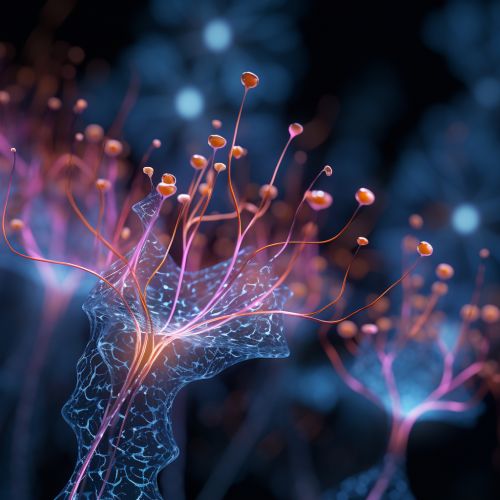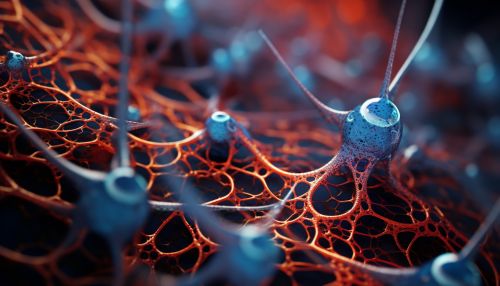Synaptic transmission
Overview
Synaptic transmission is the process by which one neuron communicates with another. This communication is achieved through the conversion of an electrical signal into a chemical one, allowing the signal to cross the synaptic cleft and bind to receptors on the post-synaptic neuron. This process is fundamental to the functioning of the nervous system, playing a key role in everything from basic reflexes to complex cognitive processes.
The Neuron
The neuron is the basic unit of the nervous system. Each neuron is composed of a cell body, dendrites, and an axon. The cell body contains the nucleus and other organelles necessary for the neuron's survival and function. The dendrites are branching structures that receive signals from other neurons and transmit them to the cell body. The axon is a long, thin structure that carries signals away from the cell body to other neurons.
The Synapse
The synapse is the junction between two neurons. It consists of the pre-synaptic neuron, the synaptic cleft, and the post-synaptic neuron. The pre-synaptic neuron is the neuron that sends the signal, while the post-synaptic neuron is the one that receives it. The synaptic cleft is the small gap between the two neurons where the signal is transmitted.


Synaptic Transmission Process
The process of synaptic transmission begins when an action potential reaches the axon terminal of the pre-synaptic neuron. This triggers the opening of voltage-gated calcium channels, allowing calcium ions to enter the neuron. The influx of calcium triggers the release of neurotransmitters from synaptic vesicles into the synaptic cleft. These neurotransmitters then bind to receptors on the post-synaptic neuron, triggering a response.
Neurotransmitters
Neurotransmitters are the chemical messengers that carry the signal across the synaptic cleft. They are stored in synaptic vesicles in the pre-synaptic neuron and are released into the synaptic cleft when an action potential arrives. Once in the synaptic cleft, they bind to specific receptors on the post-synaptic neuron, triggering a response.
Receptors
Receptors on the post-synaptic neuron are proteins that bind to neurotransmitters. When a neurotransmitter binds to a receptor, it changes the receptor's shape, triggering a response in the post-synaptic neuron. This response can either be excitatory, causing the neuron to fire an action potential, or inhibitory, preventing the neuron from firing.
Termination of Signal
The signal is terminated by the removal or breakdown of the neurotransmitter in the synaptic cleft. This can be achieved through reuptake, where the neurotransmitter is taken back up into the pre-synaptic neuron, or through enzymatic degradation, where enzymes break down the neurotransmitter.
Role in the Nervous System
Synaptic transmission plays a crucial role in the functioning of the nervous system. It is involved in everything from basic reflexes to complex cognitive processes such as learning and memory. Disorders of synaptic transmission can lead to a range of neurological and psychiatric conditions, including epilepsy, depression, and schizophrenia.
